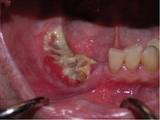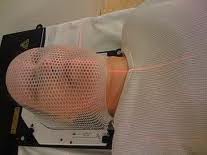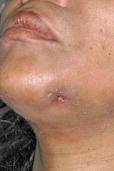In this article we will be discussing questions about osteonecrosis of the jaw such as :
What is it?
How does it happen?
What are the causes & risks for osteonecrosis of the jaw?
What are bisphosphonates?
Should I be concerned if I am on bisphosphonates?
Why is osteonecrosis of the jaw dangerous?
The treatment and prevention of osteonecrosis of the jaw will be further discussed in the article “Osteonecrosis of the Jaw Part 2”.
What is osteonecrosis of the jaw?
“Osteonecrosis†is made up of the words “osteoâ€, which means bone, and “necrosis†which means death of cells. Hence “osteonecrosis†of the jaw bone means death of cells in the jaw bones. It is diagnosed when an area of bone is exposed and shows no sign of healing or gum growing over it 8 weeks after an invasive dental procedure, such as tooth extraction or implant surgeries. Both the upper and lower jaw may be affected, and it may be associated with pain, numbness, swelling and infection of the affected site. The damage to the jaw bone is irreversible, and if left untreated, can spread and can cause devastating damages, even to the point of death.
How does osteonecrosis of the jaw happen?
Osteonecrosis of the jaw most often develops after an invasive (surgical) dental procedure such as dental extraction. It is rarely a result of infection but rather a phenomenon of non healing wound due to lack of blood supply (hypoxic wound) or dysfunction of the bone turnover. Osteonecrosis of the jaw also may occur spontaneously over boney growths in the roof or inner parts of the mouth.
What are the causes & risks for osteonecrosis of the jaw?
1. Local factors: it usually occurs after an invasive dental procedure such as dental extractions, implant surgeries. Trauma caused by ill-fitting dentures or sharp cusps of teeth may also lead to osteonecrosis. Edentulous regions are more at risk compared to dentate areas.
2. Drugs– antiresorptive medications include bisphosphonates such as alendronate (Fosamax) are commonly taken by patients with osteoporosis.
3. Cancer patients:
i) Radiotherapy– Patients who receive more than 6500 rad of radiation to the head and neck region are at risk of osteonecrosis because there is a great decrease in the blood supply in the jaw bone. This means that in any trauma or invasive procedures, there is less blood available for healing. When healing is incomplete, osteonecrosis occurs. In this case, this phenomenon is called “radiation osteonecrosisâ€, or “osteoradionecrosisâ€
ii) Patients in whom the cancer has spread (metastasized) to the bone are often treated with intravenous (IV) bisphosphonates, mainly pamidronate (Aredia®) and zoledronic acid (Zometa®).
iii) Cancer patients can be having ongoing treatment with steroids, and can be prone to infection, which also pose some risk for osteonecrosis.
4. Infections, eg Herpes zoster infection, osteomyelitis (infection of the bone)
5. long term steroid therapy
6. other risk factors such as diabetes, gum diseases and smoking
What are bisphosphonates?
Bisphosphonate is a bone-sparing drug which suppresses abnormal bone resorption. They bind to osteoclasts (the cells responsible for bone removal, as opposed to osteoblasts, the cells responsible for bone deposition. These two cells are the cells required for bone remodeling in our body), thus interfering with bone remodeling. As a result there is a decrease in bone turnover and this impedes the bone’s healing ability.
These drugs can be taken orally or as intravenous medication. Oral intake of bisphosphonate means that only a small amount actually goes into the blood and then the bone. IV bisphosphonates, however, means that the drug goes directly into your blood, and subsequently your bone. This means that patients taking IV bisphosphonates (eg cancer patients) are at higher risk of having osteonecrosis.
Should I be concerned if I am on bisphosphonates?
The higher the dosage of bisphosphonates taken, the higher the risk of osteonecrosis. However, the incidence of osteonecrosis does not directly correlate with bisphosphonate intake. This means that if you are on bisphosphonates, you will not most certainly have osteonecrosis. Similarly, osteonecrosis can also occur without any identifiable risk factors
Why is osteonecrosis of the jaw dangerous?
Osteonecrosis causes irreversible damage to the bone of the jaws. If left untreated, it can spread to the surrounding bone, the surrounding vital structures such as nerves and blood vessels, and may eat into the external skin. It can even ultimately cause death.


